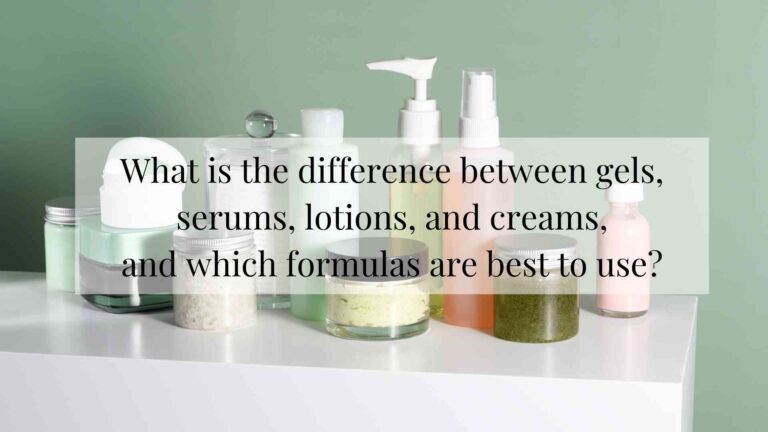Snail mucin is renowned for its exceptional hydrating properties. Packed with hyaluronic acid, it excels at attracting and retaining moisture in the skin, resulting in a visibly plump and supple complexion

The type of product you want to make is the first thing you would consider while formulating cosmetics. Do you want your product to come in gel, serum, lotion, or cream form? Sometimes you could even prefer that your product be an ointment, butter, or balm! The lighter product forms—gel, serum, lotion, and cream formulations—will be discussed in this blog. We’ll go over the differences between these formulations of cosmetics and if you might prefer one over the other.
A water gelling agent is typically used in gel formulae to achieve the product form.
When you want a super light cosmetic recipe with little to no oil present, gel formulations are fantastic. They can also be fantastic to calm the body, such as after sun or aloe vera gel type products, and are especially helpful for usage on the face for very oily skin types.
Gel formulations generally provide a tiny portion of solubility essential oils and fragrance to add a beautiful aroma. A very little amount of oils may also be added to them for marketing purposes.
The skin can receive active ingredients and hydration from serum formulations while still feeling lighter on the skin than with traditional emulsions. Serums are useful for dry and mature skin types as well as to solve other skin performance demands, like skin whitening. In some situations, serums can replace moisturizers for oily skin types.
There are 2 types of serum formulae usable in the Create Cosmetic Formulas program:
Snail mucin is renowned for its exceptional hydrating properties. Packed with hyaluronic acid, it excels at attracting and retaining moisture in the skin, resulting in a visibly plump and supple complexion
These have a bit more oil than gel-like serums but less oil than a standard cream or lotion. They work well to provide active ingredients, extracts, and humectants, and you may add more hydration on addition of them if you choose.
In crème-gel formulations, particularly specialized emulsifiers known as polymeric emulsifiers are used to produce an emulsion that is neither too thin nor too thick. They have a shape that is both cream-like and somewhat gel-like.
For oily skin types, Asian skin types, and humid regions, crème-gel formulations work wonders as moisturizers. In a convenient cream-gel form, they contain oils and humectants for moisturizing purposes, but they have a lotion skin feel.
Additionally, they can be used to create makeup primers! Creme-gel formulations are ideal as makeup primers since they don’t have a greasy buildup when they are layered with foundation products and are lighter than conventional face creams.
Emulsions, a combination of (mainly) water with some oils and/or butters present, are used to create lotion formulations. Lotions have an excellent spreading ability, making them excellent for body care products. They include 8–11% oil by weight, allowing you to customize how moisturizing they are. They also include humectants, which help the skin stay hydrated, and they may also include extracts and active ingredients that are good for the skin.
Lotion and cream formulations are generally similar, however creams often contain more oil (or butter), ranging from 9 to 12% by weight, and are thicker to cover smaller application areas like the face as opposed to the body. They typically contain at least one active ingredient and at least a few extracts, and they also contain humectants to hydrate the skin.
Formulas for oleogel are made with unique components like oil thickeners. They are most useful when an oily gel or serum is sought, but one without a greasy residue, as they make it possible to create oily gels that are less greasy than balms or regular oily serums.
The peculiarity of oleogel formulations is that they transform into milk when moist. As a result, oleogels can be used to make oil-to-milk cleansers and washable massage gels. Whereas more regular massage oils or oily gel formulations are difficult to wash away, oleogels make it simple to rinse off oily gels. Oleogel formulations can simply be enhanced with a variety of plant and essential oils for excellent skin benefits and aromatic pleasure.
©2023 Nainlab | All Rights Reserved | Web Design Service by Aarav Infotech

Join us on a journey of innovation, quality, and beauty transformation.
Discover the future of cosmetics with Nainlab.
©2023 Nainlab | All Rights Reserved | Web Design Service by Aarav Infotech

Discover the future of cosmetics with Nainlab.
©2023 Nainlab | All Rights Reserved | Web Design Service by Aarav Infotech
WhatsApp us